Introduction
By 2030, marketing managers, directors, and CMOs will face a dynamic environment where traditional strategies may no longer suffice.
Market volatility, fierce competition, and budget constraints are some of the pressing challenges that may rise.
Without adapting to these changes, brands may risk falling behind, losing customer engagement, and missing out on potential growth opportunities.
The pressure to deliver results with limited resources can be overwhelming.
The answer is to leverage marketing automation and AI. These technologies offer strategic advantages like enhanced communication, optimized customer engagement, and streamlined marketing funnels..
By embracing these technologies, businesses can qualify and nurture leads faster, integrate marketing and sales more effectively, and increase conversions, all while improving team efficiency and gaining valuable insights through 360-degree campaign monitoring.
Why do businesses need to focus on marketing automation?
In today’s fast-paced business environment, marketing automation has become a crucial component for success across various sectors.
As organizations strive to optimize their operations, enhance customer experiences, and drive sales, the role of marketing automation in achieving these goals is increasingly significant.
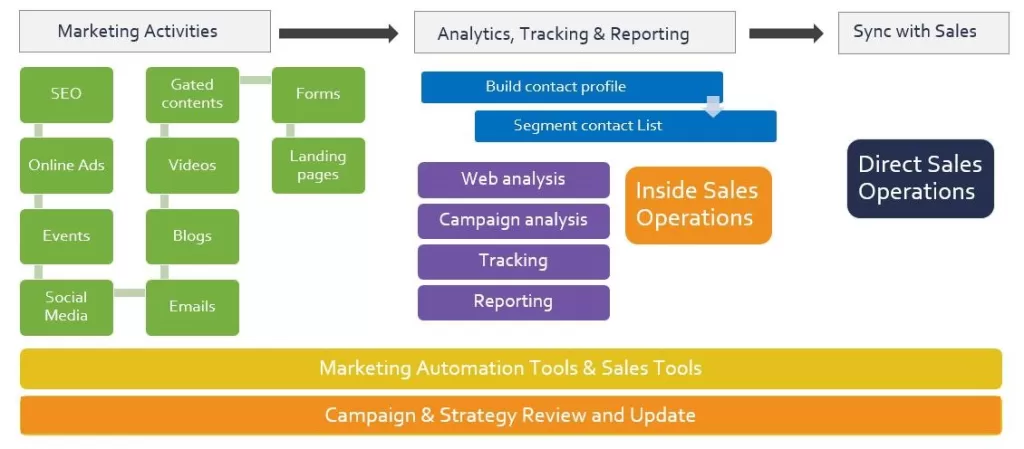
Source: Spiceworks
Let’s delve into how marketing automation is benefiting different departments within businesses:
1. Operations
Streamlined workflow
Automating tasks such as data entry, lead distribution, and report generation using tools like HubSpot, Marketo, and Infusionsoft can significantly streamline operations.
Resource allocation
Platforms like Eloqua and Pardot not only automate email campaigns but also manage customer segmentation and scoring, enabling more effective use of manpower and budget.
Performance monitoring
Tools like Google Analytics, Adobe Analytics, and Kissmetrics provide in-depth insights into website traffic, user behavior, and conversion rates, aiding in continuous performance optimization.
2. Sales
Lead generation and qualification
Tools such as LeadSquared, Eloqua, and SharpSpring automate the process of capturing and nurturing leads, ensuring a smoother transition to the sales team.
Sales and marketing alignment
CRM systems like Salesforce, Zoho CRM, and HubSpot CRM integrate with marketing tools to synchronize sales and marketing activities, ensuring consistent messaging across channels.
Customer insights
Platforms like Microsoft Dynamics 365 and Insightly CRM gather and analyze customer interaction data, providing sales teams with valuable insights for personalized selling strategies.
3. Customer service
Personalized customer interactions
Tools like Zendesk, Freshdesk, and Salesforce Service Cloud use automation to track and manage customer interactions, enabling tailored customer service experiences.
Rapid response times
Chatbot platforms such as Drift, Intercom, and Chatfuel provide instant automated responses, reducing wait times and improving customer satisfaction.
Feedback collection and analysis
Survey tools like SurveyMonkey, Typeform, and Qualtrics automate the feedback collection process, offering insights to enhance service quality.
4. Marketing
Targeted campaigns
Email marketing tools like Mailchimp, ActiveCampaign, and Constant Contact allow for automated, segmented, and personalized email campaigns.
Efficient resource use
Social media tools such as Hootsuite, Buffer, and Sprout Social automate posting schedules and track engagement, freeing up time for creative and strategic endeavors.
ROI measurement
Analytical tools like SEMrush, Ahrefs, and Moz provide detailed data on digital marketing campaigns, aiding in precise ROI tracking and strategic adjustments.
By understanding and utilizing these diverse types of workflows and tools, marketing directors can effectively leverage marketing automation to enhance departmental efficiency, improve customer relations, and drive sales, all while ensuring a cohesive and data-driven approach to their marketing strategies.
How marketers should leverage AI and automation in their 2024 marketing strategy?
Integrating AI and automation in marketing strategies for 2024 is key for businesses aiming to stay competitive and innovative.
Here’s a more nuanced breakdown of each strategy, highlighting varied metrics like percentage improvements, time savings, and other tangible results:
Ignite creativity in brainstorming with AI assistance
Utilizing OpenAI’s GPT-3 for campaign ideation, a food processing company launched their ad campaign with AI- generated images.
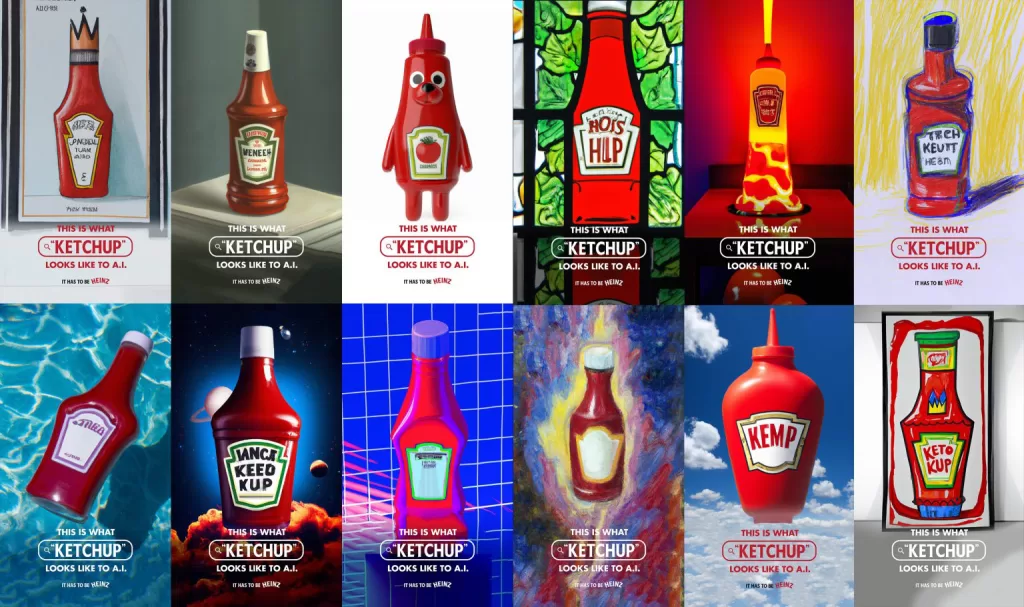
Source: Social media strategies summit
Result: Enhanced creative output and idea generation, reducing the brainstorming time by half while increasing campaign uniqueness and relevance.
Master moment-based marketing with advanced segmentation and analytics
A brand operating in San Diego, aiming to penetrate the San Francisco market, can create a segment exclusively for San Francisco residents. Tailoring marketing content for this group ensures direct engagement with the target audience, effectively establishing the brand’s presence in a new city.

Source: Adobe.com
Impact: This targeted approach results in a 30% surge in market penetration and a 20% boost in customer engagement within the new geographical segment.
Transform email marketing with AI-driven content creation
An fashion retailer uses Persado to craft email subject lines, which leads to a noticeable increase in open rates and subsequent sales upto $78M.
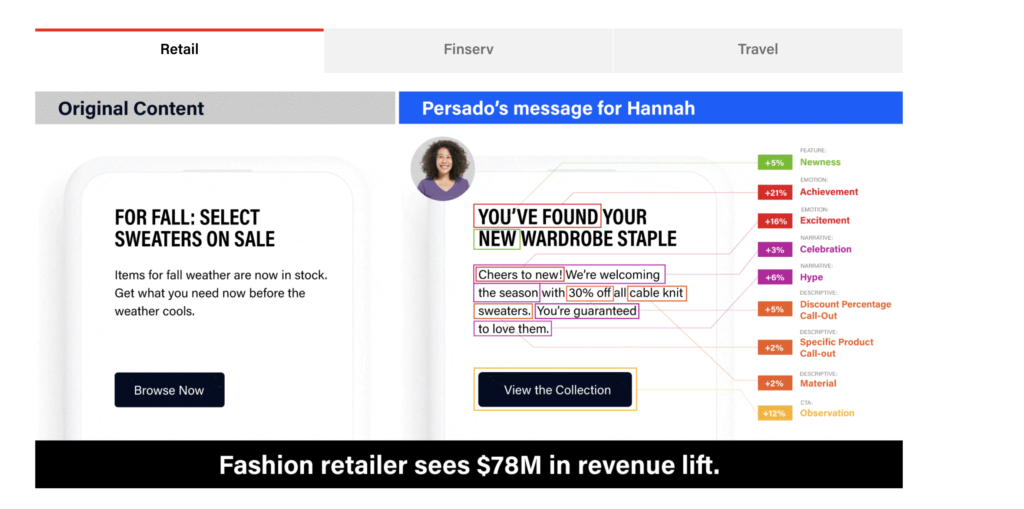
Benefit: Time spent on creating email content is reduced by 40%, while open rates increase by 15%.
Revitalize customer support with AI-powered live chat solutions
Implementing Drift for customer inquiries, a tech company automates responses to common questions, like product specs and order tracking.
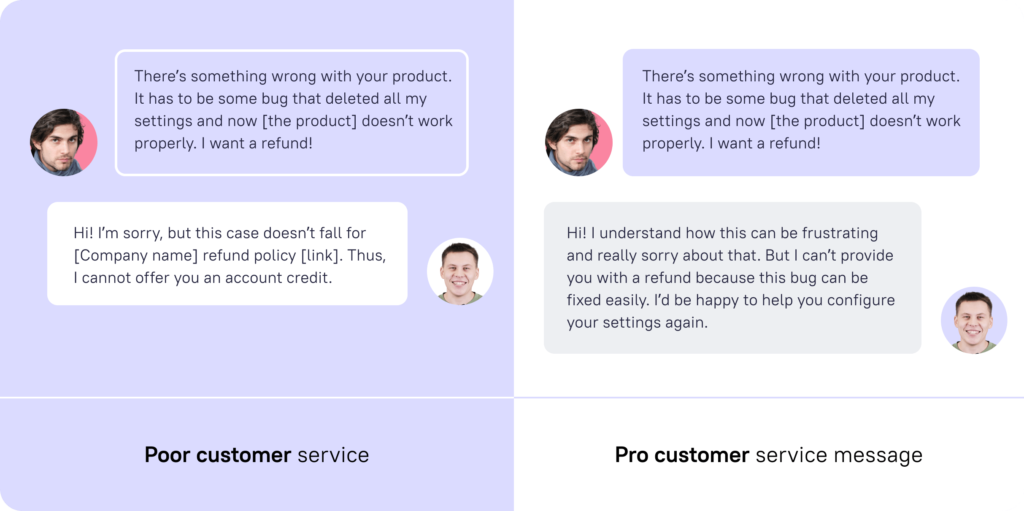
Source: Dashly
Efficiency: The average response time for customer inquiries decreases from 2 hours to 5 minutes, enhancing customer satisfaction.
Forge stronger connections with AI-triggered messaging
A fitness apparel brand uses Salesforce Einstein to send personalized follow-up emails to customers who browse but don’t buy.
Conversion Boost: This results in a 35% increase in conversions from abandoned carts.
Fine-tune email campaign timing with AI optimization
A local bakery uses Mailchimp’s Send Time Optimization to schedule their promotional emails, finding Tuesday mornings yield the highest engagement.
Optimization: This strategic scheduling leads to a 20% increase in email open rates and a 10% increase in coupon redemptions.
Streamline campaign management with automated marketing workflows
A marketing team automates social media posting using Buffer, scheduling a month’s content in advance.
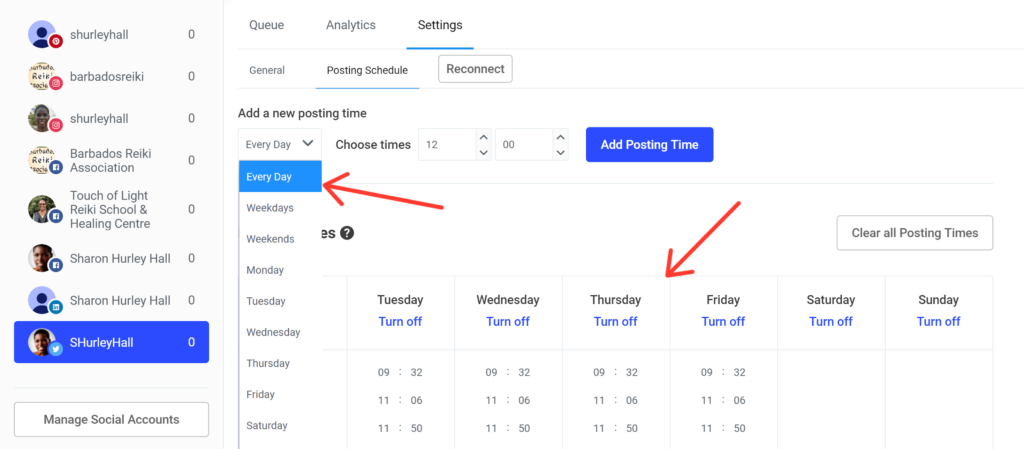
Source: Website planet
Time Savings: This automation saves the team 10 hours per month, allowing more focus on strategy and content creation.
Enhance data management with a specialized CRM manager
A CRM Manager leverages Salesforce analytics to refine customer targeting for an automobile company’s new model launch.
Sales Impact: This targeted approach contributes to a 15% increase in lead generation and a more efficient sales process.
By applying these strategies, marketers can expect not only percentage improvements in various metrics but also significant time savings and concrete results in customer engagement and sales.
Conclusion and tips for marketing managers in 2024
As marketing managers navigate the dynamic landscape of 2024, here are key tips to effectively leverage AI and automation in your marketing strategy:
1. Embrace continuous learning: Stay updated with the latest AI and automation tools and trends. The technology is evolving rapidly, and keeping abreast of these changes is crucial.
2. Focus on data quality: Invest in collecting and maintaining high-quality data. AI and automation are only as good as the data they work with. Ensure your data collection methods are robust and GDPR-compliant.
3. Balance automation with human insight: While AI offers efficiency, the human element remains irreplaceable. Use AI for data-driven insights and automation for efficiency, but keep human creativity and empathy at the core of your marketing strategy.
4. Test and iterate: Implement A/B testing for your AI-driven campaigns. Continuously analyze the performance and iterate based on the results to optimize your marketing efforts.
5. Prioritize customer privacy: With increasing concerns about data privacy, ensure your AI and automation strategies respect customer privacy and adhere to all regulatory requirements.
6. Invest in training your team: Ensure your team is well-trained in using AI and automation tools. Investing in skill development will pay off in more effective campaign management and innovation.
7. Align technology with business goals: Always align your AI and automation strategies with broader business objectives. Technology should be a means to achieve these goals, not an end in itself.
Use AI to monitor market trends and customer feedback in real-time, and be prepared to respond swiftly to market changes or customer needs.
By following these tips, marketing managers can not only maximize the benefits of AI and automation but also navigate the challenges they present, leading to a more successful and forward-thinking marketing strategy in 2024.




![How to master lead management automation [based on my 15 years exp]](https://rubianaseem.com/wp-content/uploads/2024/08/Blue-White-Modern-Marketing-Blog-Banner-4-768x432.webp)

